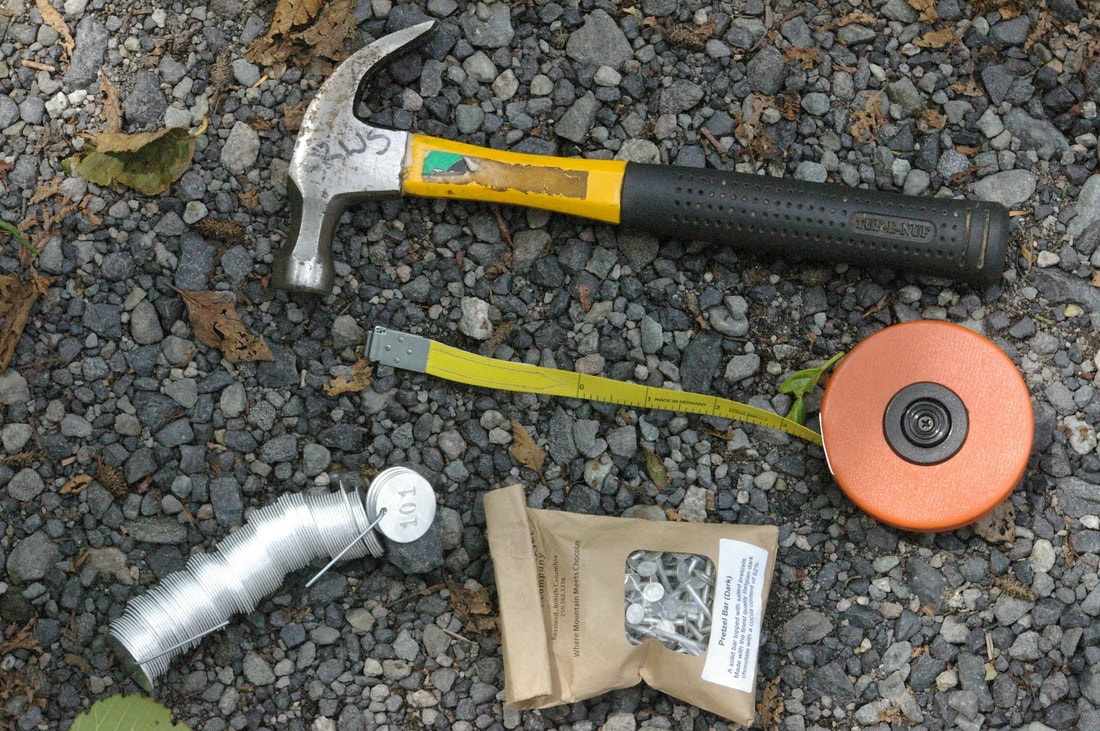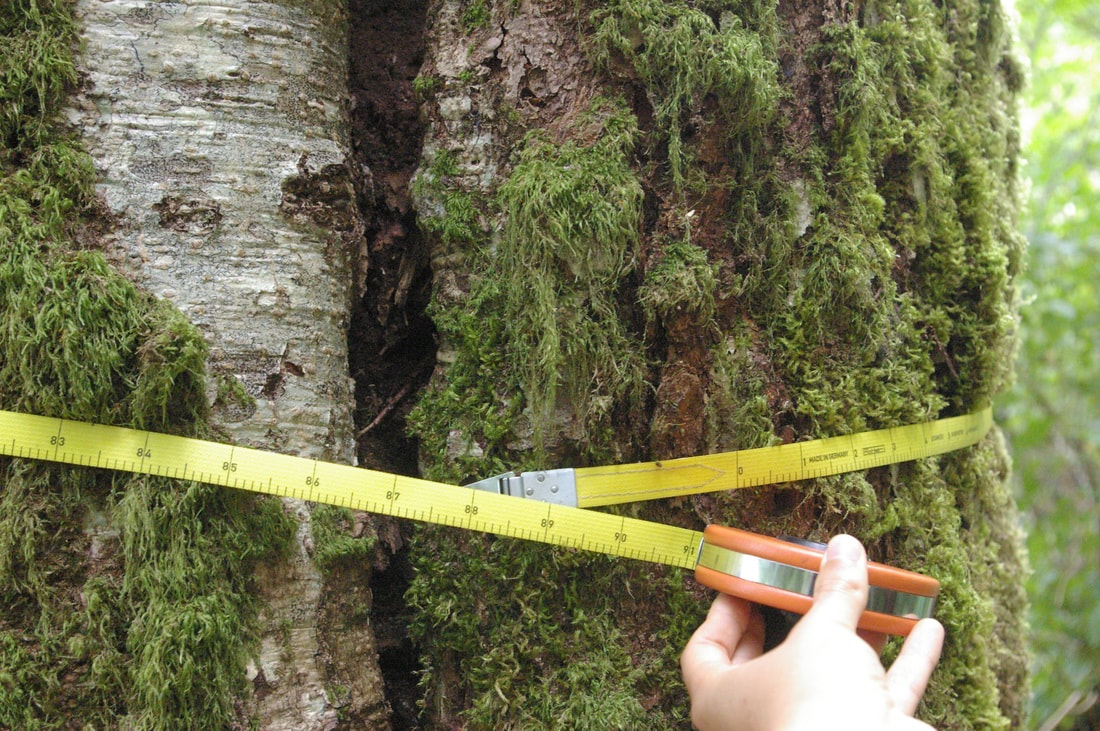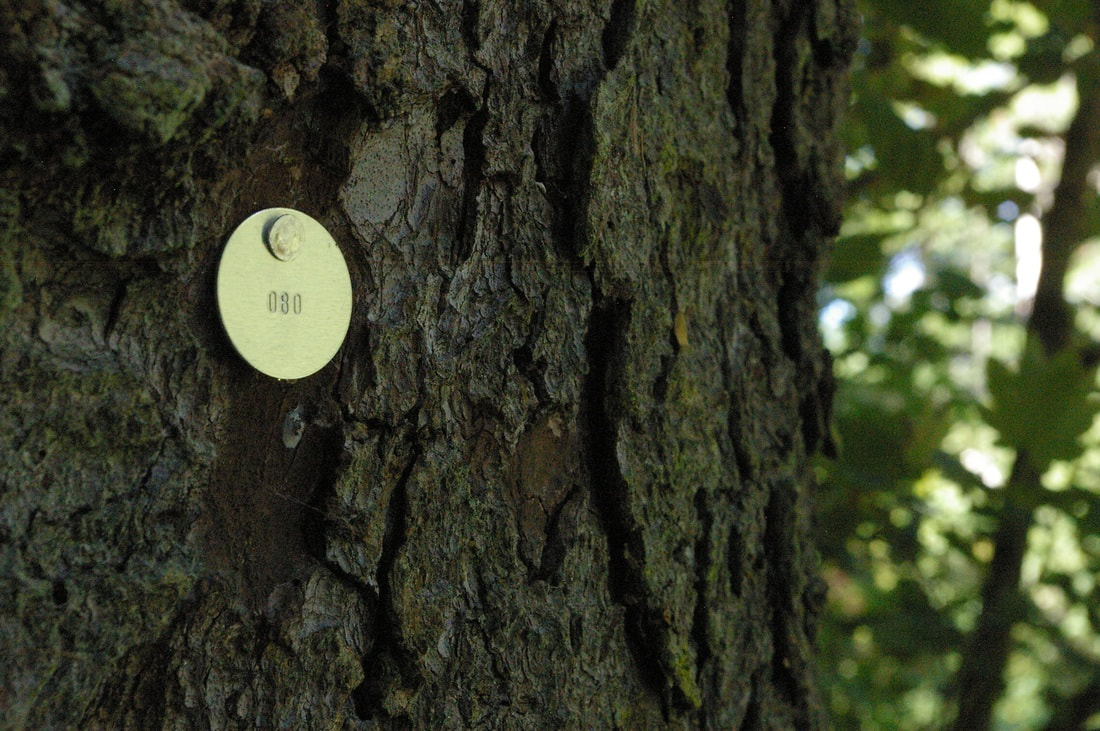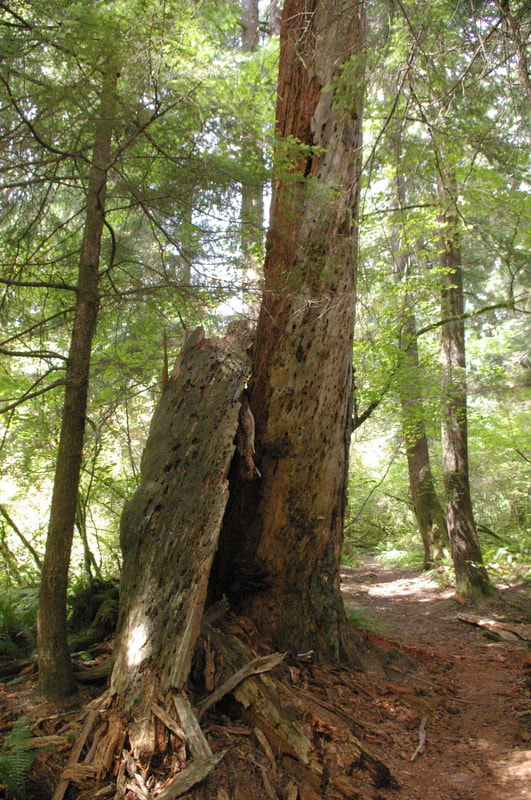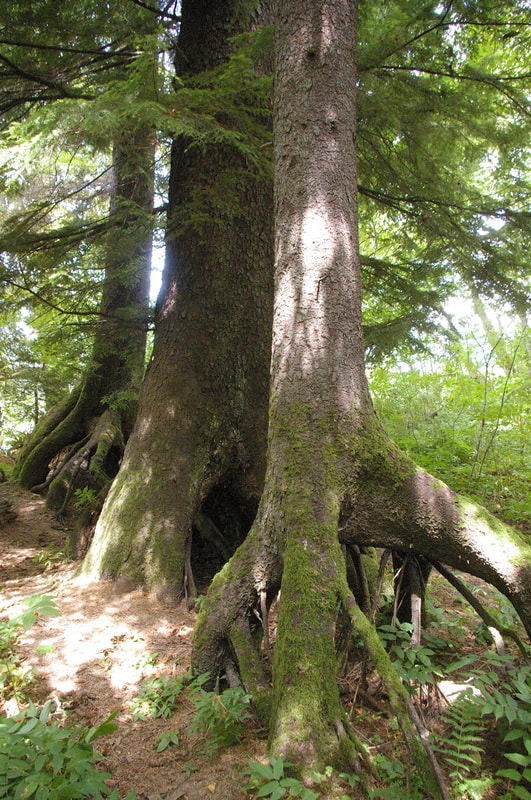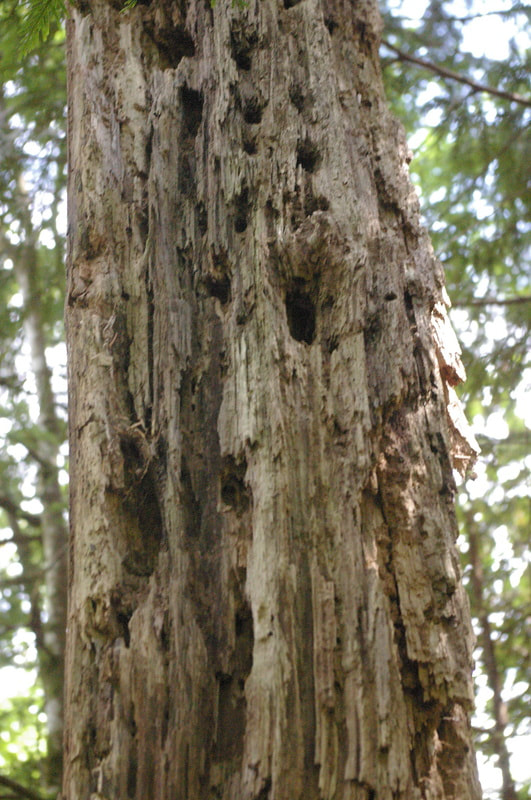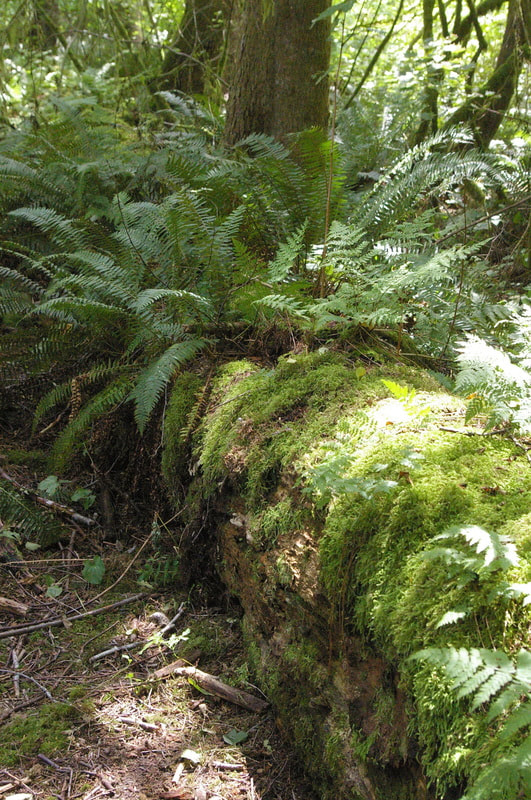SQUAMISH HERITAGE TREE PROJECT.
The Squamish River Watershed Society (SRWS) is undertaking a tree-tagging project in Squamish to bring awareness to the importance of heritage trees. A heritage tree is a significantly sized tree (diameter greater than 70cm at breast height) that survived past logging, and was likely left as seed stock to preserve the forest’s genetic diversity. These trees provide important structure to the forest plant community, habitat and food to wildlife, and provide an example of natural forest habitat to recreationists. The SRWS is tagging heritage trees in protected areas including the Skwelwil'em Squamish Estuary Wildlife Management Area, and along the Logger’s Lane Interpretive Trail. While highlighting their natural and educational importance, this project aims to document their locations to ensure future protection.
|
Wildlife Trees
A wildlife tree is any live or dead tree that provides valuable resources for wildlife. If you see signs of wildlife usage including nests, woodpecker or sapsucker holes, claw marks, or insects then you are looking at a wildlife tree! These trees play a very important role in the ecosystem by providing shelter, food, and habitat for other plants and animals all along the food chain. Find below a photo of wildlife tree classification, and some examples from the Squamish Estuary trails. |
Nursery Logs
Fallen logs and tree stumps also play an important role in forest ecosystems. The decomposing wood is habitat for fungi, mosses, young plants, and insects. Since they provide fertilization to young plants and trees, they are called nursery logs. They are also important because they release nutrients into the forest soil as they break down. This photo shows a line of trees that grew along an old log that is now completely decomposed (this is why the roots stick out of the ground). |

